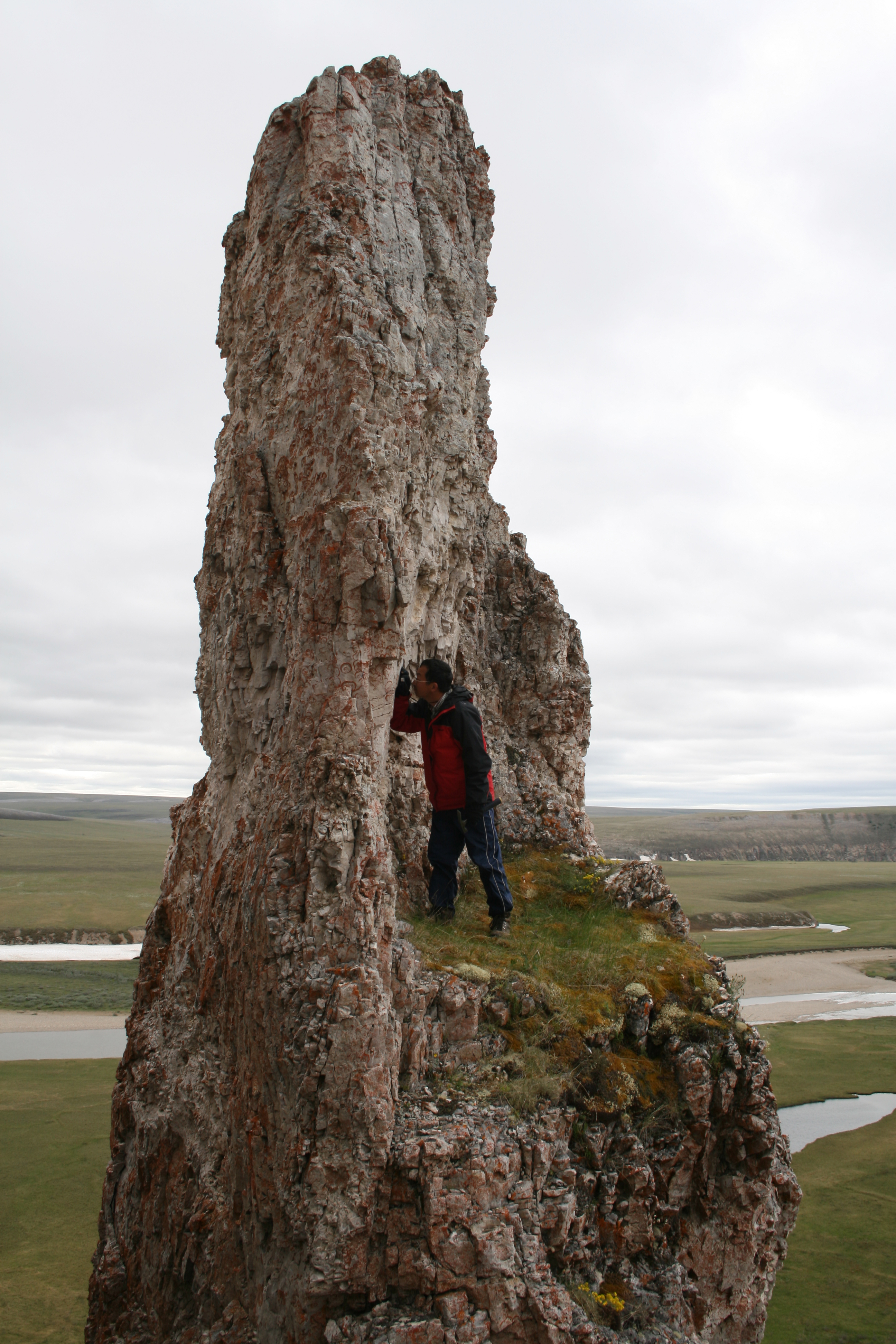Guggenheim fellowship supports research on ancient life, climate by Virginia Tech scientist

Shuhai Xiao, professor of geobiology in the College of Science at Virginia Tech, has been named a Guggenheim Fellow.
The award will support the often arduous research in Arctic Siberia that Xiao has begun to augment his years of study in South China to understand the co-evolution of the environment and early animals 600 million years ago.
Guggenheim Fellows are appointed on the basis of achievement and exceptional promise. Xiao has devoted much of his career to researching life in the Precambrian eon -- studying the co-evolution of environments and life in early Earth history using paleobiological, geological, and geochemical data. In 1998, Xiao and his colleagues discovered thousands of 600-million-year-old embryo microfossils in the Doushantuo Formation, a fossil site near Weng’an, South China. In 2000, Xiao and colleagues reported the discovery of a tubular coral-like animal that might be, for lack of a better word, a parent.
Using high-powered imaging equipment, researchers observed 1 micrometer cells and surmised that these nanocrystals started to nucleate and grow on the cell membrane before it degraded. A major part of Xiao’s research over the past decade has been to determine under what conditions the crystals grew and replicated cells before they degraded.
Meanwhile, with colleagues in China and the United States and his students, Xiao has worked to answer a number of paleoclimatic and geochemical questions, such as how much carbon dioxide there was warming our planet 1.5 billion years ago and how much oxygen was in the ocean water during these primitive ages.
The Guggenheim Fellowship will augment his latest research, which is supported by the National Science Foundation. Xiao and Jay Kaufman, professor of geology at the University of Maryland, are using geochemical and paleobiological data to understand the co-evolution of the environment and biosphere 600 million years ago. The researchers and their Russian collaborator Dima Grazhdankin from the Russian Academy of Science made their first trip to northern Siberia, just 125 miles from the Arctic coast, in June and July of 2009 to collect rock samples. Travel to the site requires hiring a helicopter and rafting down the Khorbusonka River. The travel must be done when the weather is warm enough to melt the snow and ice and to expose the rocks. The researchers often had to hike 10 to 20 miles a day to study rock outcrops.
The researchers found numerous fossils and collected many samples. "The area has great potential to offer new insights into early earth systems," Xiao said. "The Siberia rocks are about the same age as rocks in South China that we have been studying, but they were laid down in different environmental conditions. It is important to combine the Siberia and South China data in order to have a fuller picture of the earth systems in ancient times."
He is also starting a new research project on early animal mineralization, funded by NASA. "Fossils in younger rock are dominated by skeletonized organisms, but the earliest animals didn't have skeletons until just before the Cambria Period. We are trying to understand what kind of minerals these early animals used when they began to form skeletons, and why they started to make skeletons," said Xiao.
Xiao received a bachelor’s and master’s degree from Peking University in China and a master’s degree and Ph.D. from Harvard University. He studied under several internationally known geoscientists while working on his Ph.D. at Harvard. He earned his doctorate in 1998 and joined the Virginia Tech faculty in 2003 as an assistant professor. He was made full professor in 2008. Xiao’s research has been funded by multiple agencies including the National Science Foundation, NASA, the American Chemical Society, and the National Geographic Society. His research has been featured in prestigious scientific journals, such as Nature, Science, and the Proceedings of the National Academy of Science. He was the 2006 recipient of the Charles Schuchert Award presented by the Paleontological Society.




